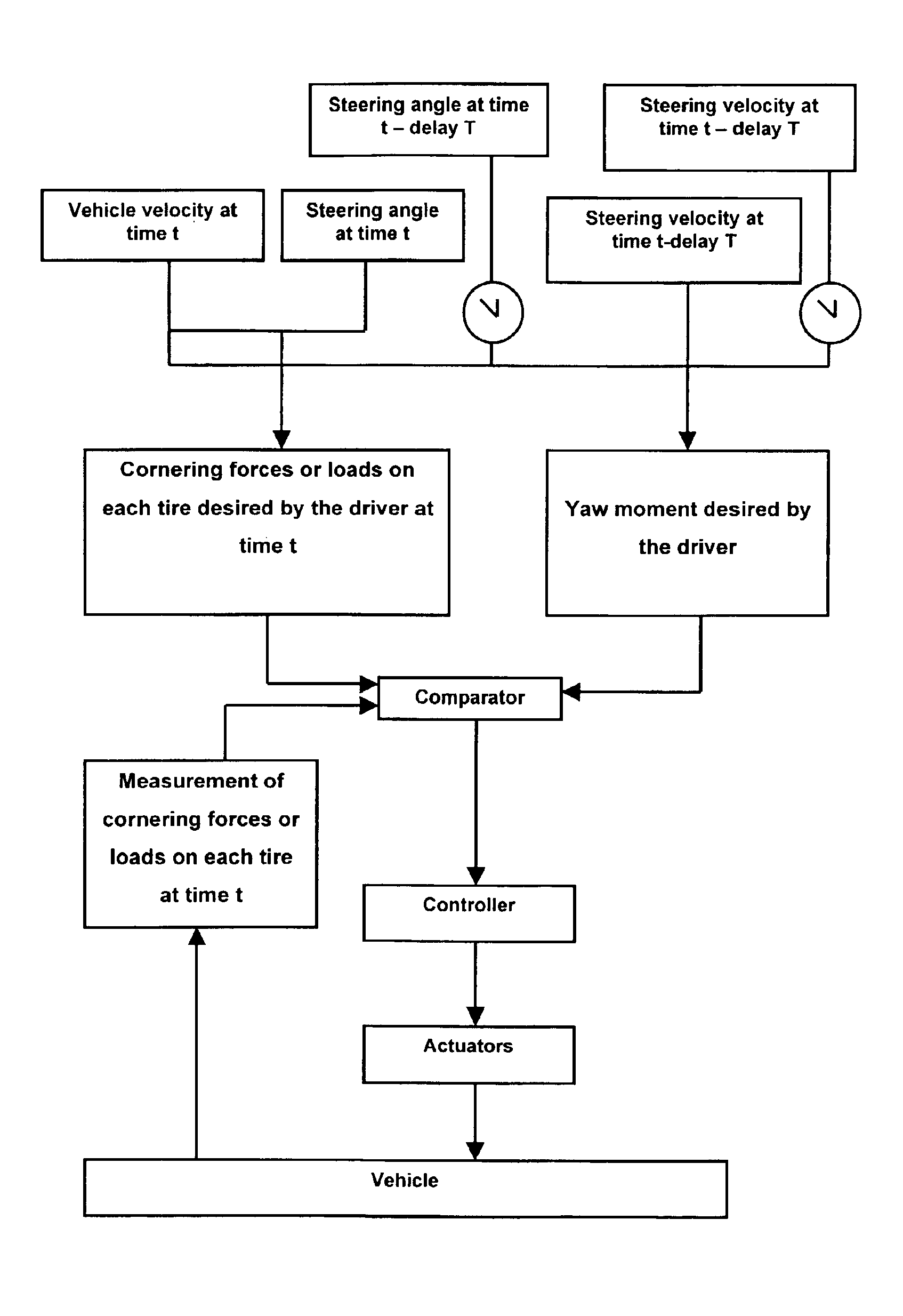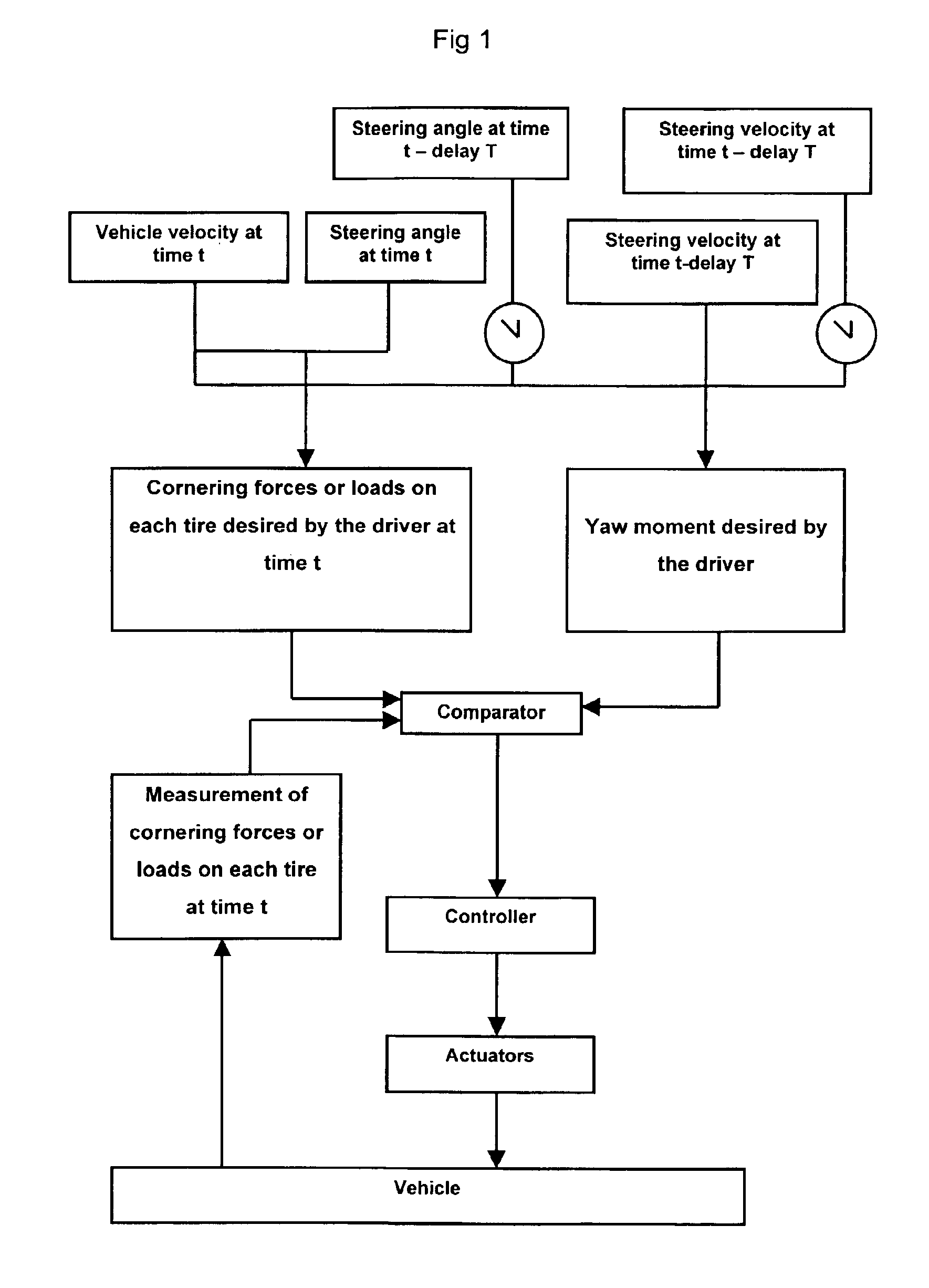Method and system for regulating a stability control system of a vehicle
- Summary
- Abstract
- Description
- Claims
- Application Information
AI Technical Summary
Benefits of technology
Problems solved by technology
Method used
Image
Examples
Embodiment Construction
We shall start from the fact that, at a given velocity, an angle at the steering wheel imposed by the driver may be interpreted as a cornering force or load instruction, or as a yaw moment instruction on the vehicle. This is shown diagrammatically in the upper part of FIG. 1. Furthermore, it has been seen that in order to implement the present invention, it is necessary to have measurements of the actual cornering forces (cornering forces of the tires or elastic tire casings used in the ground contacting arrangement). This is illustrated in the left-hand section, starting from “vehicle,” in FIG. 1. In the case where it is desired to act on the distribution of the loads (see other explanations below concerning the effect on the yaw moment of the distribution of the loads), it is necessary to have measurements of the actual loads.
The diagram in FIG. 1 superimposes several methods: either the actions of the driver at a given moment and the preceding actions are interpreted as a demand ...
PUM
 Login to View More
Login to View More Abstract
Description
Claims
Application Information
 Login to View More
Login to View More - R&D
- Intellectual Property
- Life Sciences
- Materials
- Tech Scout
- Unparalleled Data Quality
- Higher Quality Content
- 60% Fewer Hallucinations
Browse by: Latest US Patents, China's latest patents, Technical Efficacy Thesaurus, Application Domain, Technology Topic, Popular Technical Reports.
© 2025 PatSnap. All rights reserved.Legal|Privacy policy|Modern Slavery Act Transparency Statement|Sitemap|About US| Contact US: help@patsnap.com



